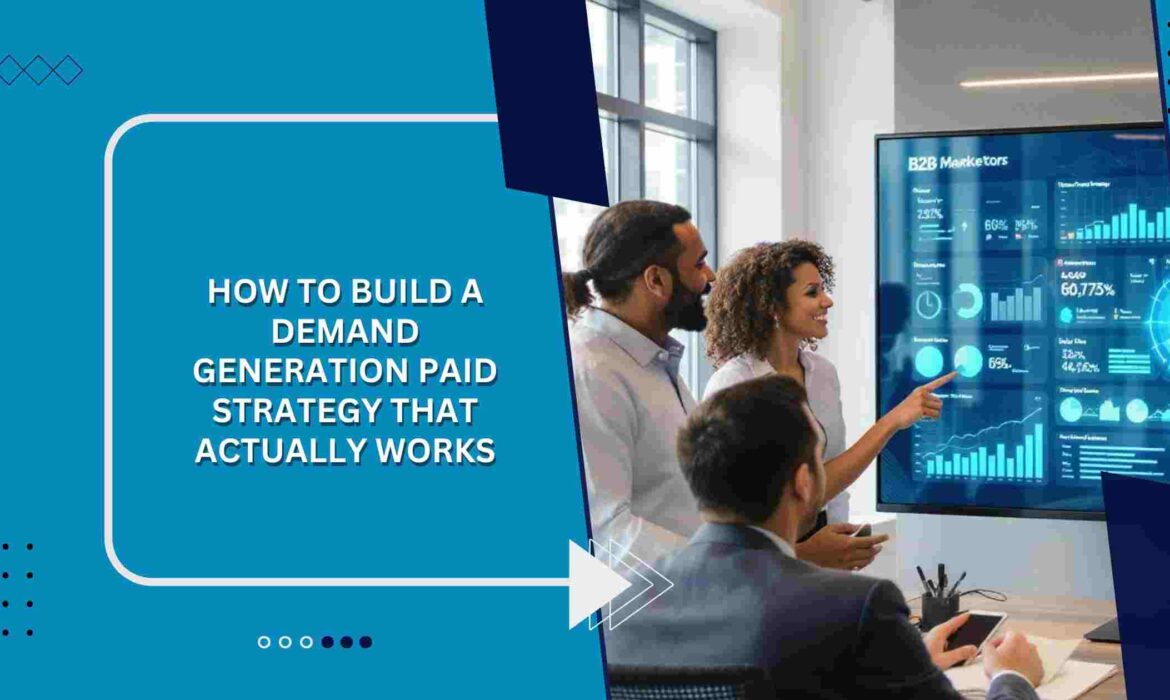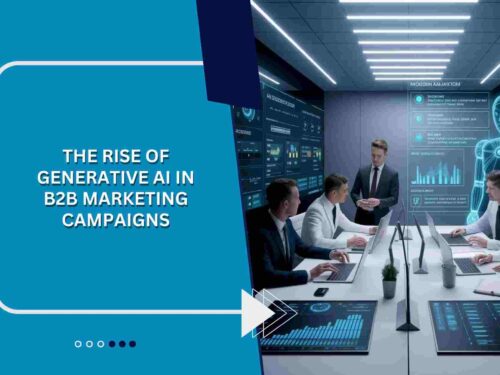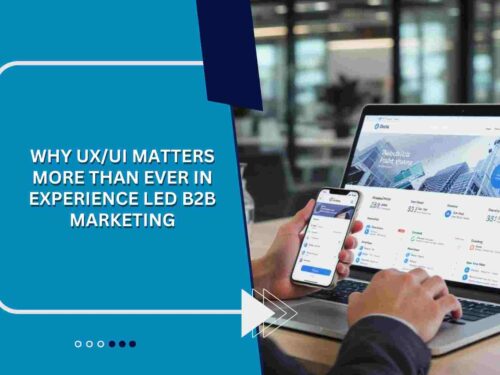In the fast-moving world of B2B marketing, visibility alone is no longer enough. To win in 2025’s competitive digital ecosystem, businesses must focus on building a demand generation paid strategy that doesn’t just create awareness it drives measurable action and sales pipeline growth. Paid demand generation isn’t about flooding digital spaces with ads. It’s about reaching the right people, at the right time, with the right message.
From paid social and display ads to PPC and retargeting, a paid strategy allows marketers to control where their budget is going while tracking performance in real time. The goal is simple: attract high-intent prospects and convert them into qualified leads efficiently.
Let’s explore how to build a demand generation paid strategy that actually works without wasting money, time, or opportunities.
Understanding Demand Generation vs. Lead Generation
Before diving into the strategy, it’s crucial to clarify what demand generation really means. Unlike lead generation, which typically focuses on collecting contact information like email addresses, demand generation is broader. It’s about generating interest and demand for your product or service across the entire buyer journey.
While lead generation is often short-term and form-based, demand generation encompasses awareness, education, and relationship-building supported by targeted paid campaigns to keep your brand top of mind.
In 2025, a successful demand generation paid strategy should be multi-channel, content-rich, and data-backed.
Step 1: Define Clear Demand Generation Goals
You can’t measure what you don’t define. Every effective demand generation paid strategy begins with specific objectives.
Ask questions like:
- Are we looking to increase brand awareness or drive form fills?
- Do we want more demo requests or nurture high-quality leads?
- What’s our average sales cycle, and how do paid tactics align?
Examples of actionable goals include increasing MQLs by a certain percentage through LinkedIn Ads, driving more traffic to product landing pages using Google Search Ads, or reducing cost per acquisition through optimized retargeting campaigns. Your paid strategy should map directly to these objectives, aligning messaging and channels accordingly.
Step 2: Build Audience Personas Backed by Data
Targeting is everything in paid demand generation. You need to know who you’re talking to and why they would care. Relying on assumptions or outdated customer profiles won’t cut it.
Build data-backed personas by interviewing existing customers, analyzing CRM and intent data, reviewing buyer behavior on your website and platforms, and collaborating with sales for feedback on real prospects. Ideal personas should define job roles, industries, pain points, motivations, and preferred digital channels. With this intelligence, your demand generation paid campaigns can hyper-target your best-fit audiences at scale.
Step 3: Create Content That Fuels Demand
Paid strategies without compelling content are doomed to fail. The content must match the audience’s stage in the buyer journey awareness, consideration, or decision. For the awareness stage, you might focus on trend reports and industry blogs. For the consideration stage, provide webinars and product comparisons. And at the decision stage, use case studies and demos.
Every piece of content promoted via paid channels should lead to a relevant next step, be it a landing page, lead capture form, or nurture sequence.
Step 4: Choose the Right Paid Channels
Where you spend your budget matters just as much as how you spend it. Your target audience isn’t everywhere they’re on specific platforms, and your demand generation strategy needs to meet them there.
Here are the top paid channels for B2B demand generation in 2025:
1. LinkedIn Ads
The go-to platform for B2B targeting. Segment by job title, company size, industry, and more. Use Lead Gen Forms to reduce drop-offs.
2. Google Search Ads
Capture high-intent users searching for your solutions. Bid on strategic keywords with buyer intent and use ad extensions to boost visibility.
3. Display & Programmatic
Ideal for brand awareness and remarketing. Visual display ads help stay top of mind through behavioral targeting across third-party sites.
4. YouTube Pre-Roll Ads
Great for showcasing customer stories or product explainers. Target users based on search behavior and interests.
5. Meta (Facebook/Instagram) Ads
Still effective for B2B awareness in mid-market or small business segments. Creative content is key.
Test different formats carousel, video, single image and track which delivers the best ROI per audience segment.
Step 5: Build High-Converting Landing Pages
Once your paid ads capture attention, don’t let visitors fall through the cracks. Landing pages are critical in converting clicks into qualified leads.
Demand generation landing pages should be hyper-relevant to the ad copy, load fast, be mobile-friendly, include compelling headlines, and feature trust signals. The lead form should be short and focused, guiding users toward one primary call-to-action. Regularly test headlines, visuals, and form placements to identify what works best. Use heatmaps and analytics to understand user behavior and make data-driven improvements.
Step 6: Set Up Robust Tracking and Attribution
No matter how brilliant your demand generation paid strategy is, without proper tracking, it’s all guesswork.
Use UTM parameters to track ad and campaign sources. Implement multi-touch attribution to understand assisted conversions. Connect your ad platforms with your CRM and marketing automation tools. Go beyond vanity metrics like impressions or clicks. Track downstream metrics such as MQLs, SQLs, influenced pipeline, and actual revenue. Data is not just for proving ROI but for optimizing and scaling campaigns effectively.
Step 7: Launch, Test, Optimize, Repeat
In 2025, static campaigns are dead. Successful demand generation marketers treat paid media like a living organism always evolving, always improving.
Test Variables Like:
- Headlines and ad copy
- Targeting segments
- Bidding strategies
- Visual creatives
- Time of day or week
Use campaign insights to adjust budgets, pause underperformers, and double down on high-impact assets.
One key practice is to run controlled experiments (A/B or multivariate) with clear hypotheses. For example:
Hypothesis: “Switching from a whitepaper offer to a free demo CTA will increase our conversion rate by 20%.”
Test: Run both in parallel for two weeks with identical targeting.
Result: Use data to confirm, refine, or scrap.
Step 8: Align Paid Strategy with Sales and SDR Teams
One of the biggest pitfalls in demand generation is the disconnect between marketing and sales. Paid campaigns must sync with your SDRs or sales team to convert leads efficiently.
Share campaign goals, expected lead quality, and messaging with the sales team. Ensure leads are routed in real-time to reduce response time. Create playbooks for follow-up cadence and capture feedback on lead quality. When marketing and sales collaborate, the customer experience becomes smoother and conversions increase.
Step 9: Retarget and Nurture the Middle of the Funnel
Not every click turns into a lead immediately. That’s where retargeting and nurturing come in.
Use dynamic remarketing to re-engage visitors who didn’t convert or leads who showed interest but didn’t act. Offer them new content such as webinars, case studies, or calculators that push them toward a decision. Demand generation requires patience and persistence, and retargeting bridges the gap between first touch and final conversion.
Step 10: Invest in Continuous Learning and Scaling
No strategy lasts forever. As algorithms, buyer behavior, and markets shift, your demand generation approach must adapt. Hold regular campaign reviews to identify patterns. Stay updated on changes in ad platforms. Attend relevant marketing events and webinars. Create feedback loops between teams. Benchmark performance against industry standards.
When you discover what works, double down. Scale successful campaigns by increasing budget, expanding geography, or replicating formats across departments. Continuous improvement keeps your paid demand generation strategy sharp and competitive.
Looking to accelerate your B2B growth with high-impact demand generation campaigns? Get in touch with the experts at Acceligize, your strategic partner in building performance-driven paid media solutions.




